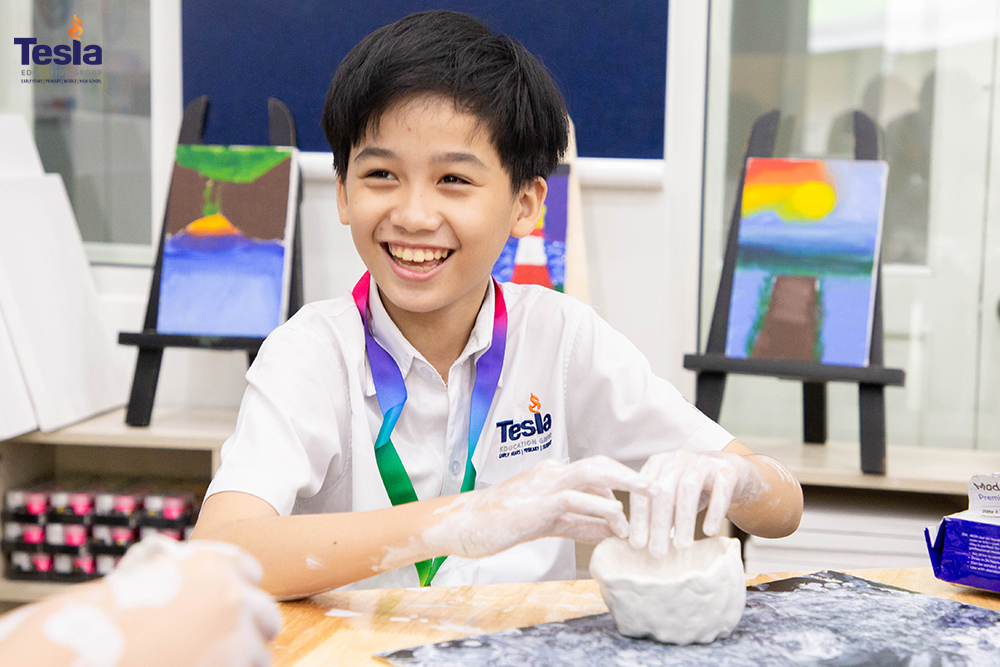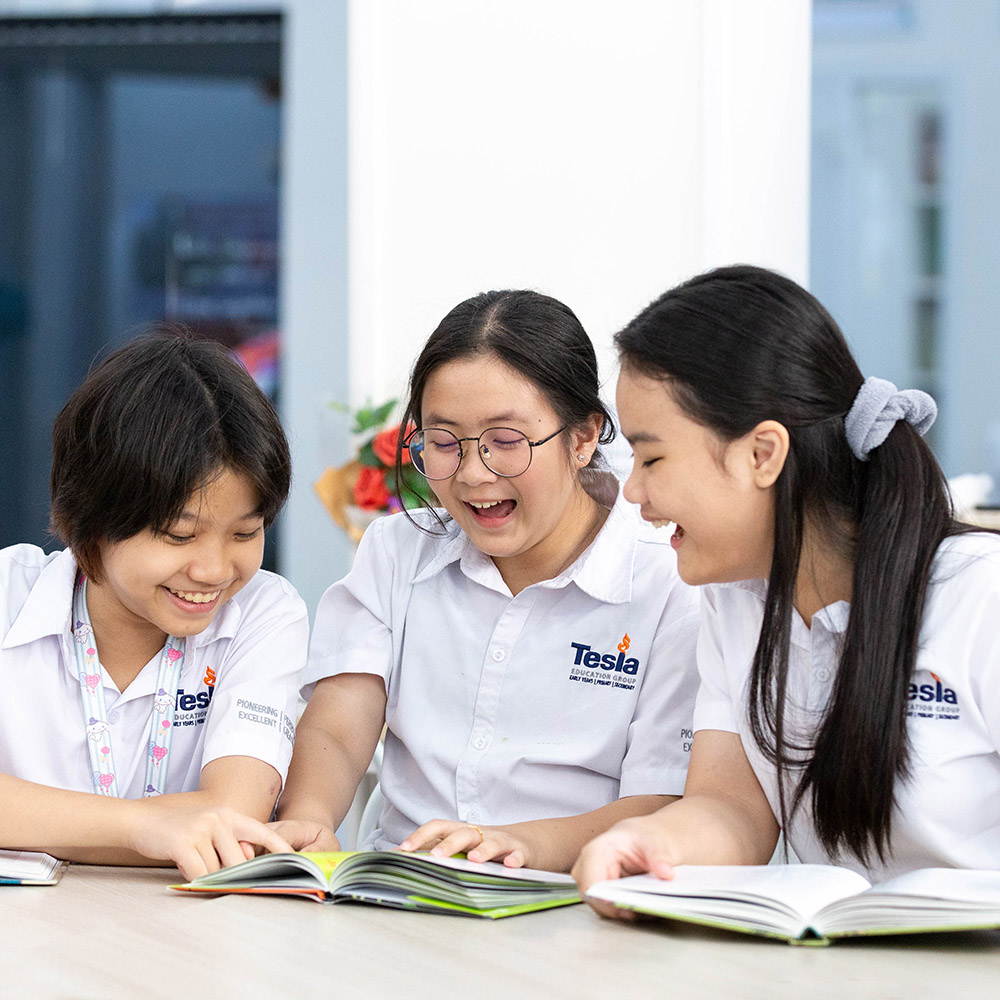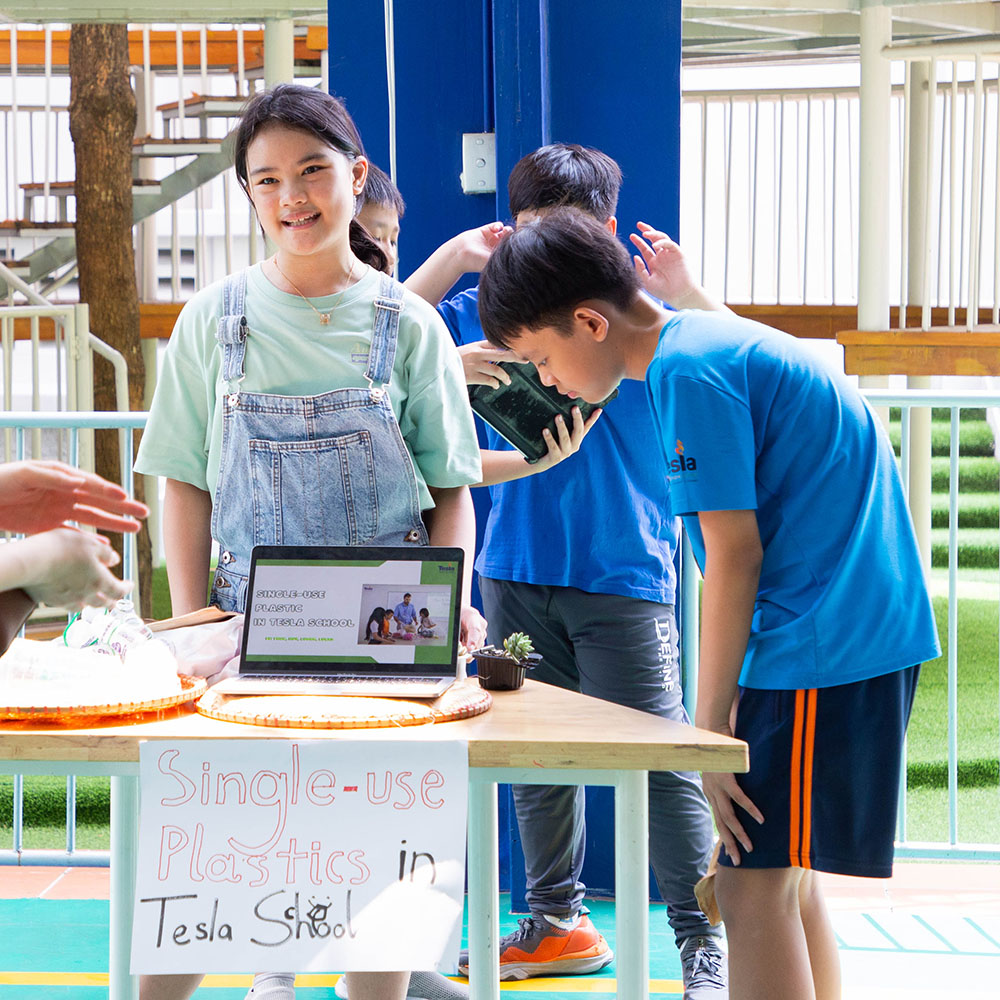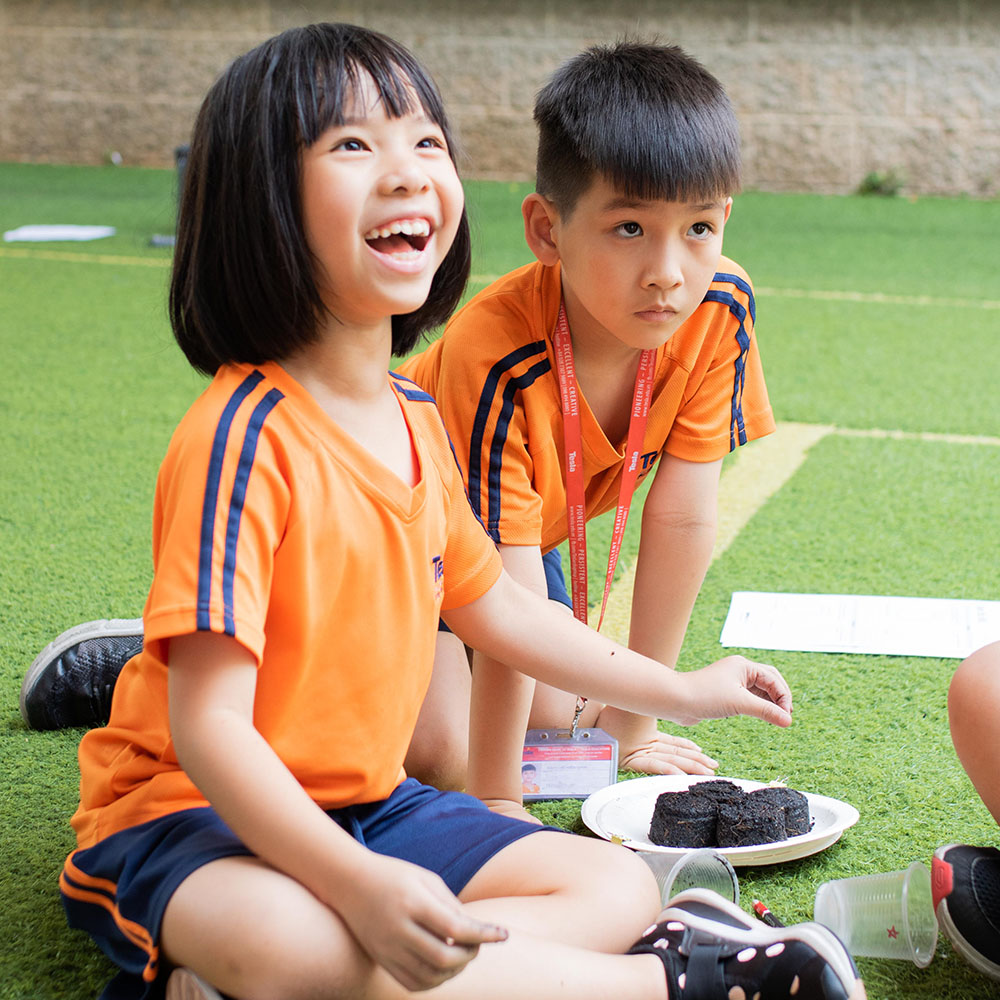Tesla Talk Week March 12th 2021

Robin Klymow
Director of Studies
Newsletter 12th March, 2021
I sometimes ask teachers to get down on the floor of their classroom and just look around from the height of a four or five-year-old. It’s eye-opening to reflect on the many ways that adults inflict adult pacing, adult expectations, and adult schedules on young children. And for what reason? Young children sleep less and have far more transitions in their days than in previous generations and I think most educators and parents would agree that their developing brains aren’t really designed to cope with adult schedules and pacing.
We all basically know this is a problem, but it’s hard to break the cycle. We need to step back and see the world from a child’s point of view. We see their development through an adult’s eyes, imagining that we couldn’t possibly learn anything from an hour digging in a container of mud, so it must be time to get out the math worksheet!
Some of this ‘adultification’ comes from an inattention to what makes little children act and a significant lack of faith in what young children are capable of.
What does high-quality early education look like? If you walked into a preschool that uses best practices, what would you see and hear?
Quality education is about relationships. Caring teachers who understand child development and who know and are tuned into the children in their care are far more important than many of the measures of quality we use today, such as class size, physical environments, or a specific curriculum.
Open-ended conversation is critical, and children need time in the day to experience warm, empathic oral language—to converse with each other playfully, to tell a long story to an adult, to listen to high-quality literature, and ask meaningful questions.
But, it’s so important to keep in mind that tuned-in teaching is the opposite of a free-for-all where children are running the show. Quality preschool teachers are intentional and clear about everything they do: the classroom routines, the physical environment, the schedule, the types of materials they make available for children to explore and manipulate. These teachers do an extraordinary amount of observation and reflection—and it’s really almost impossible to do that in a vacuum: the best preschools have collaborative, inquiry-based planning so that they can continually experiment with and modify their learning environments to take advantage of each child’s natural curiosity.
Many thanks,
Robin Klymow
Director of Studies

Ms. Nguyen Ha Huyen Kim
PYP Coordinator
The IB Learner Profile is a set of learning outcomes that illustrate the development of internationally-minded people through specific attributes- Caring, Reflective, Open-minded, Knowledgeable, Well-balanced, Principled, Inquirers, Thinkers, Communicators and Risk-takers. At Tesla, students are given the opportunities to engage themselves in different learning activities, through which they do not just achieve academic success but best develop their character traits to help themselves, others, and the world around them. Students’ demonstration of these qualities in various levels is recognized, documented, encouraged, and commended along their learning journeys. It can be a small act of showing care when helping a friend to adjust their goggles at the swimming lesson; taking risks in learning a new skill; enjoying working in many subjects; to be able to communicate in more than one language.




Ms. Nguyen Thi Quynh Dien
MYP Coordinator
Clay project Grade 3 returned to normal lessons at the beginning of March and showed their enthusiasm for doing the 3-D project using clay. After creating some designs, students began producing their clay pinch pots. Making a ball by using two hand laps, putting a thumb in the middle of the ball, moving the fingers around to form the shape of a pot, refining its form by using the hands to tap on it gently – these were the steps students followed to fashion their pots. Some students remade the form more than once to make the best possible pot. The students were initially challenged but were delighted to see their finished pots at the end! Next lesson, they will add painted designs to complete their project.







Ms. Huynh Thi Kim Ngoc
Grade 4 Homeroom Teacher
Grade 4 students are learning about tree description. Their learning does not just take place inside the classroom but also outside. This will bring practical experience and feelings to learners. Every writing tells a unique perspective, which is why I always provide opportunities for students to express their individual experiences in writing and speaking. Let’s look at pictures from Grade 4 students in their journey to observe and write about their favorite trees.




Ms. Nguyen Hoang An Khanh
English Teacher
Grade 3 students have been learning about Animals and Plants. In order to practice their reading comprehension, we decided to go hunt for animals in the library. In this activities, students receive copies of the question worksheets (18 questions) and they have to search the library to find the fact cards (18 cards) to answer the questions. Students really enjoyed this activity. They had a chance to work in groups, to learn outside their classroom and to be active. Reading comprehension is always fun with Tesla students!





Mr. Carlos Boyano
ICT Teacher
Pictures are from the Grade 1 and 4 AI lessons. During this time students were introduced to the use of Arduino by using Microbit. Microbit is a small computer device that can perform all sorts of things like power cameras, write words on lights (currently is what the students were doing), choose a playlist, control musical instruments, etc. Students worked on the simulator for these initial sessions.




Ms. Claire Yvanwee Ocampo
Teacher Librarian
To officially open our Learning Resources Centre, we will have our weeklong event entitled “Book Week”. Our team has been busy preparing and planning to make sure that everything is going to be fun and memorable. Each day will have its very own theme to showcase Tesla student’s talents in acting, writing, and arts & crafts. At the LRC, the goal is not only to support the academic growth of the students but to also make learning more fun by having exciting extra-curricular activities that help them gain skills outside the classroom. We want them to remember that the library is the heart of every school, the center of knowledge and imagination.


Ms. Christine Byrne
Director of Admissions
Understanding Kindergarten (KG) at TESLA SCHOOL
Tesla is now a candidate for the IBPYP; IBMYP; IBDP and that means that Grade KG is the first year of Primary School, the same as all other IB World Schools around the globe. At Tesla, KG children (aged 5yrs – 6yrs) are beginning their International Baccalaureate (IB) journey in the first year of Primary School. This is very different from the Vietnamese National curriculum, where they begin Primary School when moving to Gr 1 (6yrs – 7yrs).
KG is a period of tremendous cognitive growth. Children at this age are undergoing a large amount of change very quickly and are learning to see the world in many new and interesting ways. However, it’s also important to realize that even at this early stage, there are fundamental skills that children need to acquire in order to be successful later in life. These core cognitive skills will help them be successful at an early age, but children will also build upon those skills as they get older. Each week in Tesla Talk we will introduce you to 5 core skills for KG to develop. Today we introduce the third important and foundation skill:
Counting from 1 to 10, correctly and consistently.
This skill is the foundation of all math and will come in very handy as your child’s KG class begins writing numbers, learning simple addition, understanding the concepts of “more” and “less”, and sorting groups of items.
Being able to count from one through 10 is a core skill that all children should have before moving beyond the first year of Primary (KG). The ability to count that high is actually a relatively complex skill for kids in KG. It requires them to be able to recognize what each number means, understand how to arrange those numbers in the appropriate order, and finally count those numbers without needing any sort of external help.
At Tesla KG is our first year of Primary School and therefore we know that it is important to begin teaching KG children, critical thinking, communication, and other core skills as early as possible. These are building blocks upon which students will continue to rely as they grow older. Without establishing these skills early in life, students will be left at a disadvantage as they continue to move into higher levels of education.
Highlights of Early Years
Children make cards and flowers for their mothers on Women’s Day
Not only the lovely cards, but also flowers and plant pots made by students for their mothers. Through learning activities in class, students not only have the freedom to create but also understand the meaning of International Women’s Day, and show affection for loved ones.






Admissions
Important information for our current families and friends in regards to any younger siblings / younger children that you may like to enroll for the New School Year August 2021 – 2022. Tesla Admissions is now open, please apply to ensure that your place is secured early, as some grades may fill up fast creating a waitlist for August 2021.
Please submit the Inquiry Form at https://tesla.edu.vn/en/admissions/admissions-process/, and the Admissions Team will contact you.
If you would like to receive more information regarding enrollment, please contact Tesla at: admission@tesla.edu.vn.

Limited Scholarships available now for new MYP students 2021-2022
Tesla is pleased to offer a limited number of Academic Scholarships ranging from 25% to 100% for new MYP students for the next school year 2021-2022. Please note the closing date is coming soon on April 1st 2021, please apply now!
If you would like to receive more information regarding enrollment, please contact Tesla at: admission@tesla.edu.vn.














